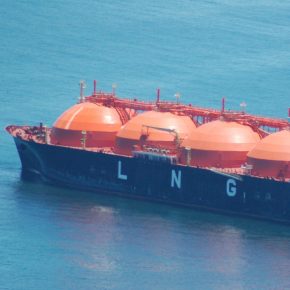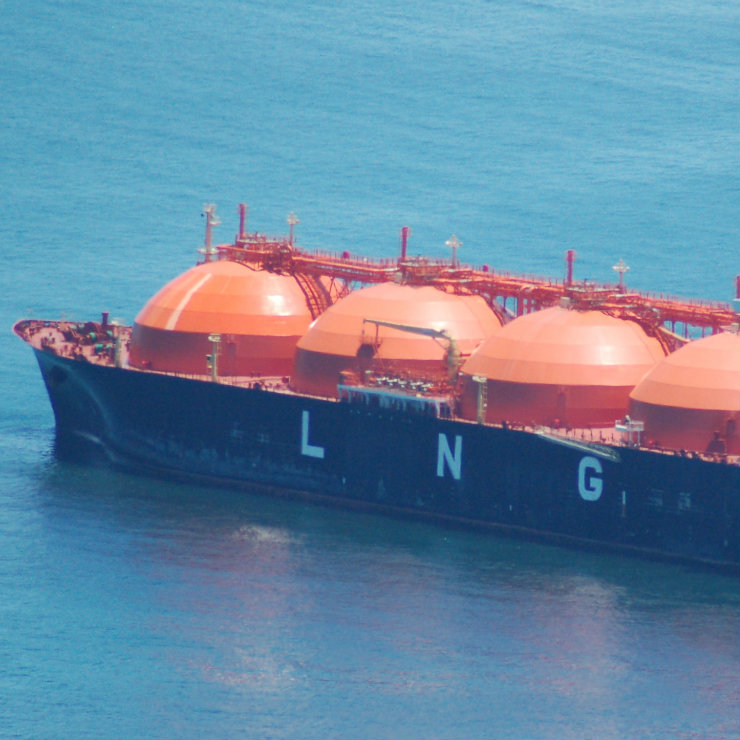Tydzień w gospodarce
Category: Trendy gospodarcze
Analyst, journalist specializing in the Western Balkans and Middle East domestic and foreign affairs

(Lens Envy, CC BY-NC-ND)
It is a strategically important Greek harbor, situated 14,5 kilometers away from the river Marica Delta, 30 kilometers from the Greek-Turkish border and some 300 kilometers from Thessaloniki. Greeks offer 20 per cent of the terminal to Serbian state, and the same shares would be owned by the Greek gas company DEPA and Bulgarian Energy Holding (BEH), while the rest would be sold to the private companies.
The Greek offer is interesting from the aspect of gas supply and security, but the Serbian government is careful. The Serbian Minister of Mining and Energy, Aleksandar Antić says the government should analyze if this investment makes sense and then take a decision. The main problem is who will be the major LNG supplier. The long standing political situation in Serbia asks for the public balance of pro-EU and pro-Russian policies. Dependence on the Russian gas is sometimes seen as the biggest guarantee of the Serbian-Russian friendship. If the incoming gas is going to be an American or of some other Western allied country, it may stir political conflicts in Serbia.
The Serbian government expects to obtain financial means from the EU grants, especially the non-returnable financial means, as this project fits the European project on common interests (PCI – EC Regulation 347/2013), which is one of the development priorities of the EU energy infrastructure project already discussed with Athens and Sofia. This project would allow a new gas supply route for Europe. The European Commission would raise its grants for this project from EUR14m to EUR49,6m. Additionally, EU is legally obliged to the solidarity mechanism in case of a serious problem in gas supplies, including the regional cooperation. EU covers 1/3 of its gas demands from Russia, while the rest comes from Norway, Algeria, and Qatar.
The LNG would be transported to the Alexandroupoli port by tankers, then to the gas terminal 17,6 kilometers away from the port itself. Its capacity would be 170.000 cubic meters of gas with an annual flow of 6,1 billion cubic meters (bcm). The gas pipeline would go to the Greek town of Komotini and then to the Bulgarian town of Stara Zagora. Bulgarians already have a pipeline to the Serbian eastern city of Dimitrovgrad and further to Niš, where the Serbian government plans to build another terminal (read more).
The European project intends to divert this gas also to Romania, Hungary, and Ukraine, but these quantities would be transported only through Serbia, which is a great possibility to have financial gains for transport. At the same time, Serbia would diversify its suppliers. This gas pipeline should be finished by the end of 2019. This means Serbia and Bulgaria should enhance their cooperation on building the pipeline interconnection. The same goes for Romania and the interconnection Mokrin-Arad, as Romanians have bigger gas reserves than Serbia.
Last year, the Serbian government decided to expand its gas storage facility Banatski dvor, in the north of the country and build new storages in order to secure the gas supplies. Serbia is looking beyond 2019, when the supply routes through Ukraine could be stopped, as Russia is planning to open flow through the North Stream II. Among other alternatives for Serbia are Azeri and Turkish pipelines Tanap and Tap, which would be possible in the best scenario only in 2020.
Indeed, the demand is increasing. Serbia had the coldest January in the last 52 years and the Russian gas giant Gazprom increased the export to Serbia for 32,5 per cent more than in January 2016. Almost everything went to the private houses heating. Gazprom calculated huge profits from January to April this year, especially for additional gas sold in Turkey (25 per cent increase), Hungary (31,5 per cent), Serbia (32,5 per cent) and Bulgaria (20,8 per cent).
Serbia is increasingly preparing for the diversification of its energy. Lots of infrastructure projects are under way, specifically the interconnections of the Pančevo oil refinery with storage facilities all over the country and the energy transit line on the north-south axis. With the help of the EU funds, Belgrade intends to build a thermal energy plan in Kostolac, two or three wind parks, several smaller hydro energy plants, and to invest in biomass, presuming much more electric cars in future. The Serbian think tanks are busy in estimating the energy security risks, among which the economic and social factor is important, as there are only two big gas producers on which Serbia can count: Russia and Qatar. Both are now in the middle of the geopolitical struggles on regional and global levels.
The Greek pipeline has its biggest challenge in the Turkish Stream, an initiative between the Turkish and Russian government. Lately, Hungary and Gazprom signed a contract on the continuation of this pipeline through Bulgaria and Serbia, up to Hungary, which is a practically partial revival of the South Stream, that was canceled in 2014 because of the EU objections. The Serbian energy experts are optimistic for the Turkish Stream, as Brussels has no objections this time, and the contractors are bound to the European energy standards and so called Third energy package. The Turkish Stream began with positioning the pipes in the Black Sea, and this EUR11,4bn worth project will connect Russia and Istanbul.
Former South Stream had intentions to build a direct pipeline to Bulgaria, but now it will be just an interconnection from Turkey. The EU cannot do much to stop these developments. Bulgaria is practically forced to make a deal with Russia. Although the United States and Europe have guaranteed gas quantities before, Bulgarians are still dependent entirely on the Russian energy. Serbia, on the other hand, is heavily dependent on any Bulgarian decision, as every pipeline from the south has to come through Bulgaria (read more).
Budapest and Belgrade welcome the Turkish Stream and hail the new pipeline as the solution to the national and energy security, and a source of economic development. Still, Serbia needs to ask itself how much gas is needed, given the current industrial situation in the country. The industry uses the energy inefficiently, which is relatively easily solved with more energy efficiency and larger use of the homemade gas.
Romania and Croatia will not participate in the Turkish Stream, as Russia and Turkey decided this route is the most realistic solution. Their intention is to strengthen the gas export to Turkey, where Istanbul area demands more gas than whole Western Balkan; but it also gives Turkey an ideal position to become a transit country to the European Union, instead of Ukraine. Belgrade is more than happy to be on the route and some cubic meters are already offered to Bosnia and Herzegovina, Croatia, even Kosovo.
Energy experts in Serbia announce some 2,000 new jobs, but everything still clings on the Serbian capabilities to build the pipelines and facilities, with European or Gazprom help. The Serbian government shouldn’t forget the fact that Turkish Stream is primarily made for Turkey and not for Europe, and the Western Balkans have a rather small market. Even if Italy wants to buy some gas, the pipeline continuation from Turkey serves the local markets in Bulgaria, Hungary, Serbia, Greece. A stronger position on the market can be achieved only if the big powers give the green light.
Vedran Obućina is an analyst and a journalist specializing in the Croatian and Middle East domestic and foreign affairs. He is the Secretary of the Society for Mediterranean Studies at the University of Rijeka and a Foreign Affairs Analyst at The Atlantic Post.

